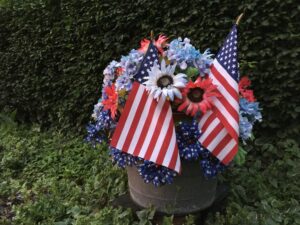
John Adams, our second president, and Thomas Jefferson, our third president, were great friends who became estranged for years but reconciled before they both died on July 4, 1826. Each was an attorney who championed individual liberty and civil rights. Adams believed the date of America’s birth was July 2, 1776, the date the Continental Congress voted for independence. Jefferson thought our birthday was July 4, 1776, the date the Declaration of Independence was signed. Both Founding Fathers declared we should celebrate our founding with special activities.
Jefferson was the first president to host a July 4 commemoration at the White House. Jefferson wrote about Independence Day, “For ourselves, let the annual return of this day forever refresh our recollections of these rights, and an undiminished devotion to them.”
Adams sent a letter to his wife Abigail on July 3, 1776 in which he declaimed:
“I am apt to believe that it (July 2, 1776) will be celebrated, by succeeding Generations, as the great anniversary Festival.
…
It ought to be solemnized with Pomp and Parade, with Shews (shows), Games, Sports, Guns, Bells, Bonfires and Illumination from one End of this Continent to the other from this Time forward forever more.”
My family, and most likely yours too Gentle Reader, have carried out these patriotic demands for as long as we have been fortunate enough to do so. For more than the past twenty years my family has gathered around July 4 and reveled in the wonder of the United States of America by engaging in a hotly contested Independence Jeopardy game.

This year our son Jim portrayed Benjamin Franklin, my nephews Dennis and David Redwine, donned the colonial frocks of Uncle Sam and George Washington and teams of relatives vied to earn the Independence Day Jeopardy championship. The competition was fierce and only barbeque and copious desserts could assuage those who came in out of first.
It is always good to get our large and close-knit family together, especially over a hotly contested game of colonial history. It is of special meaning in our current atmosphere of political upheaval to remind ourselves what truly matters. So, happy birthday to all of us whether you agree with Adams or Jefferson or choose some other special time around our founding in the first week of July, 1776.





